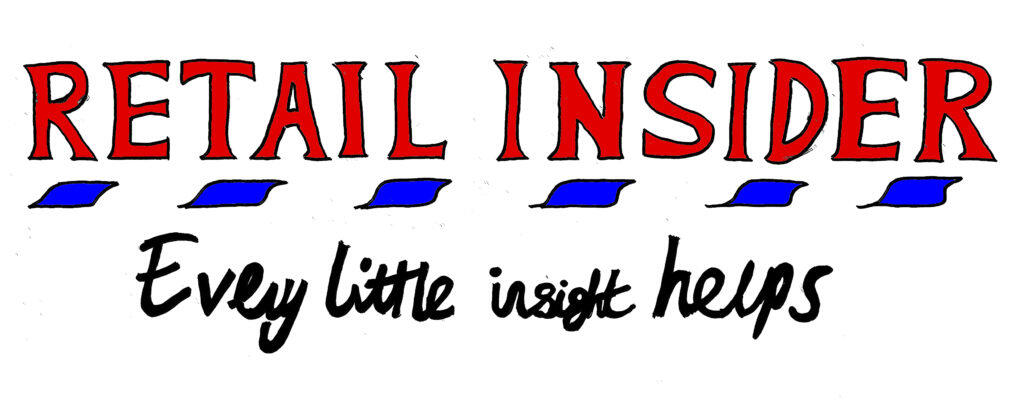Guest Slot – Alan Giles questions vertical integration
Vertical integration is back in fashion. (we think so, as you can read here). Morrisons recently bought a fish processing plant in Grimsby, having purchased a flower wholesaler last year. Sports Direct’s Mike Ashley has been buying up brands – most recently Firetrap – almost as fast as his football team have been acquiring Premier League points.
There are clear success stories. Zara’s seemingly unpromising strategy of sourcing about half their garments from their own production facilities in La Coruña has allowed them to invent the notion of “fast fashion”, demonstrating that higher production costs don’t matter if you can improve sales and markdown rates enough.
Most of the major food retailers, most notably The Cooperative Group, Waitrose and Morrisons, have made a virtue of owning upstream operations which address consumer’s worries about food provenance and sustainable behaviour.
But in many other cases it’s less obvious that owning upstream production has helped. It can lead to corporate schizophrenia; is Thorntons a retailer that happens to own a factory in Derbyshire, or a manufacturer that happens to own some shops?
Is American Apparel’s much lauded vertical integration really a success? Despite housing all the production processes in a single building in Downtown LA the company enjoys only a modest level of profitability.
I have some personal experience of vertical integration. One of my first jobs in retailing was as the Product Manager for own brand medicines at Boots, where I felt like a political football stuck between the production planning constraints of the Beeston factories, and the customer-facing motivations of the shops.
Later, when I worked at WHSmith, the company owned the largest wholesaler of newspapers and magazines, WHSmith News, and was the largest retail newsagent. Other retail customers – not unreasonably – suspected that WHSmith stores received “favoured nation” treatment on terms, and products in short supply.
Meanwhile WHSmith stores themselves felt that precisely the opposite was true; the external customer – who in most instances could take their business elsewhere – was treated better than the captive internal customer. It was a constant source of tension, and unsurprisingly WHSmith divested its wholesale arm in 2006.
There has always been a temptation for publishers to own booksellers or vice-versa, with the most recent UK example WHSmith’s short-lived ownership of Hodder Headline from 1999 to 2005. Previously both Penguin and Collins publishers had owned bookshop chains.
It’s always been tempting to look greedily at the margin the other link in the supply chain is making. But the skills and culture of retailing and publishing are profoundly different. I can’t think of a single example where this strategy has worked for a sustained period.
Can it ever make sense? Certainly as a last resort to protect an important channel to market. The major record labels recently acted to try to safeguard HMV’s future. It’s not vertical integration per se, as they clearly don’t have control, but nevertheless it is a direct investment in a downstream activity. Similarly Adidas have played a part in the measures just announced to provide financial security for JJB Sports.
Many retailers are also becoming impatient at their supplier’s poor record of product innovation in a sluggish market. Kingfisher has invested in a team of fifty at its recently opened innovation centre in Lille to provide more impetus on product breakthroughs. Similarly Tesco has established its venture brands team to research and develop unique products where there are gaps in the market.
Perhaps owning the R&D capability, but then outsourcing production to third party manufacturers is the optimum approach. Many clothing retailers have been doing this for years – Marks & Spencer used to refer to it as “manufacturing without factories”.
Alan Giles is chairman of Fat Face and former chief executive of HMV Group




Hi Alan
Very interesting post, though I think there are two different VI models. In the WHS examples you cited, News and HodderHeadline were suppliers both to WHS Retail, and to other external retailers, which I can understand created constant tension and conflicting goals.
However, it’s a little different when the upstream manufacturer just exists to service the retailer/owner. Card Factory appears to be doing a great job thanks to vertical integration, and this strength has enabled them to undercut Clinton’s.
Thornton’s used to run a Card Factory-type operation – now they sell to supermarkets, and the brand has become devalued and standalone shops are struggling.
I suspect there is no straightforward yes/no answer here – and that what is brilliantly innovative today might be a millstone tomorrow.
I agree with that Philip, although dedicated upstream manufacturing doesn’t always stay dedicated. When there is spare capacity in the manufacturing business, or if it is really competitive, there is a great temptation to take on external third party customers and that’s when the complexity and conflicts comes in.